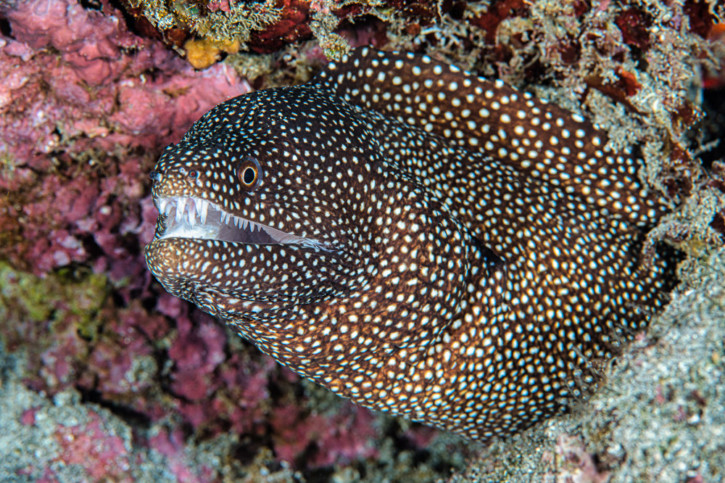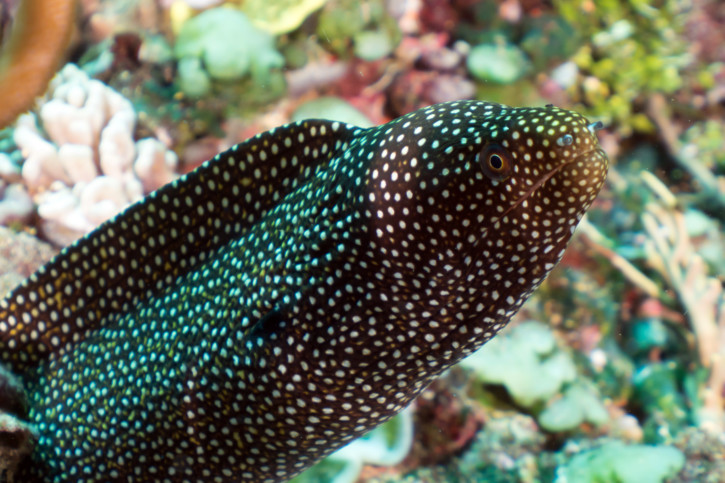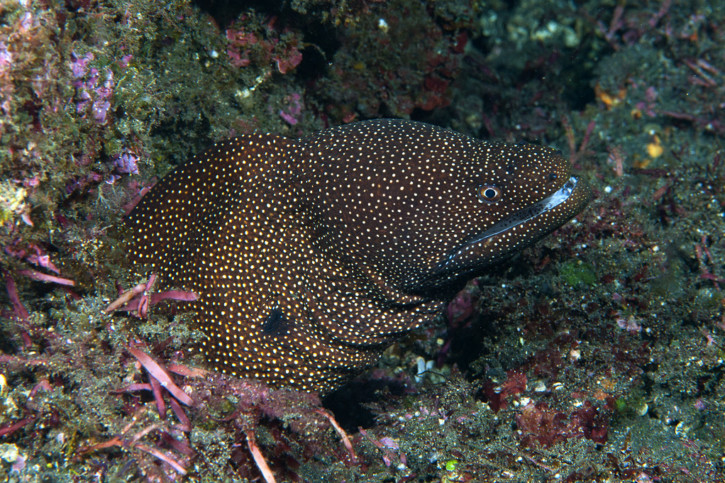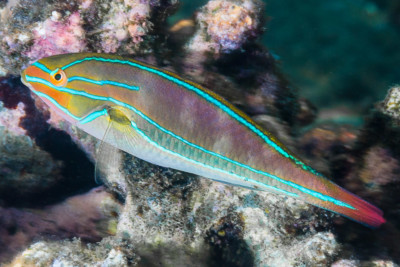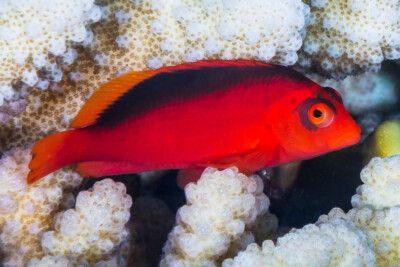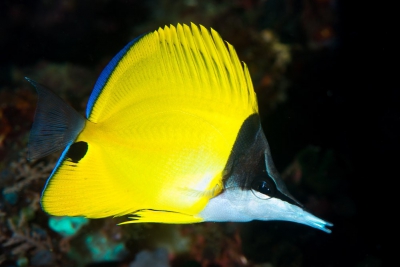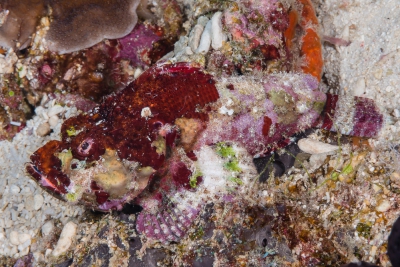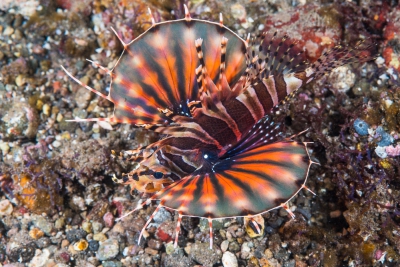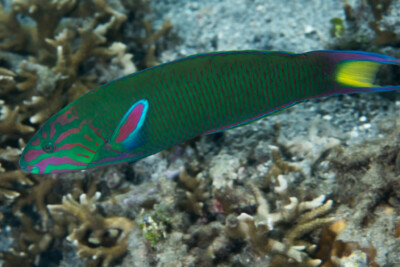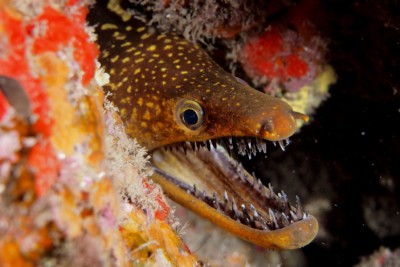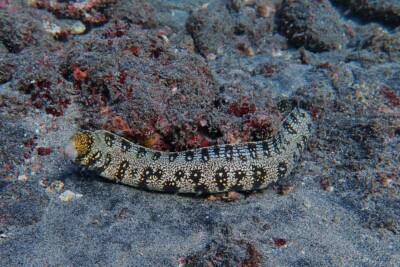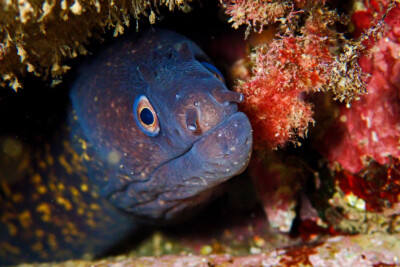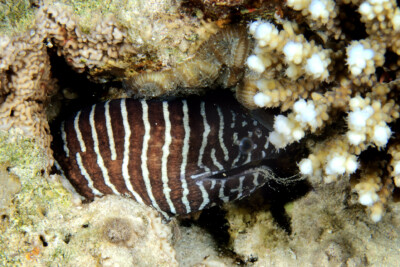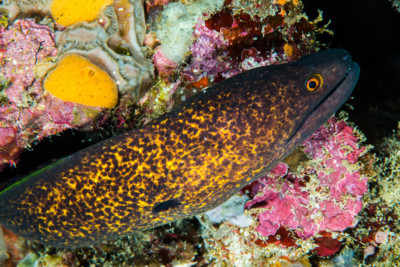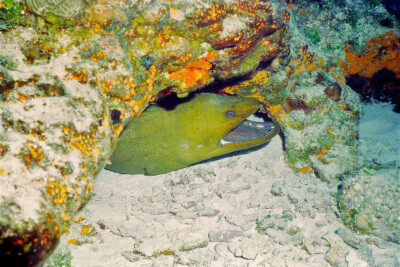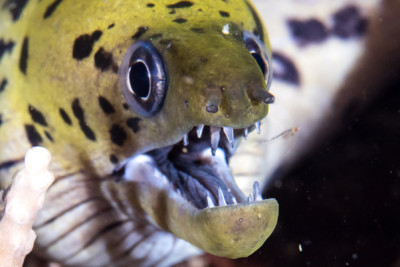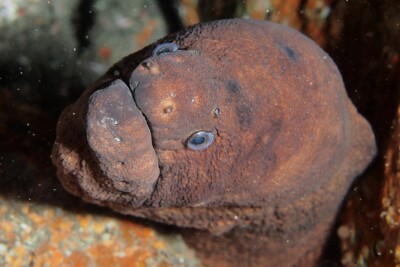painted moray
| Scientific name | Gymnothorax meleagris |
|---|---|
| Descriptor | Shaw |
| Year of description | 1795 |
| IUCN category (World) | LC |
| Family | Muraenidae |
| Genus | Gymnothorax |
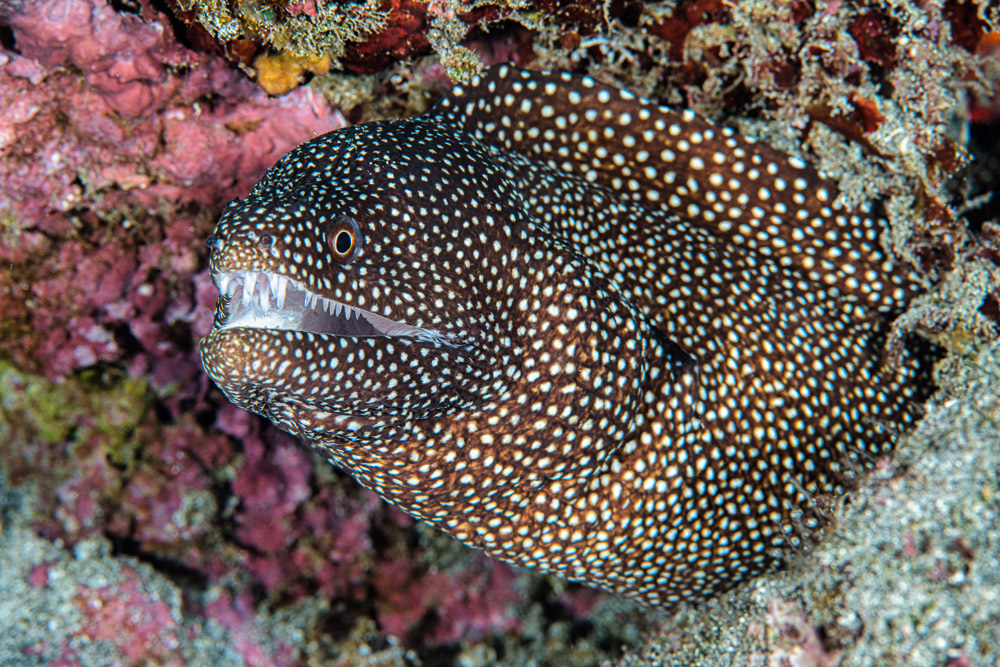

Introduction
Gymnothorax meleagris, is an eel-like fish from the moray eel family, commonly known as the "Painted Moray" because of its coloration resembling that of a guinea fowl.
It can be confused with other species with similar patterns such as the leopard moray (Gymnothorax favagineus) or the yellow-mouthed moray (Gymnothorax nudivomer) which also have very contrasting markings.
This medium-sized moray, reaching up to 1.20m, is found in all the coastal areas of the Indo-Pacific and has the peculiarity of enjoying shallow and even brackish waters.
Who is it?
Morphology
-
Type
-
Average size80 cm
-
Maximum size120 cm
-
Longevity30 year
-
Mimicrystone
-
Patternponctuations
-
Type
-
Average size80 cm
-
Maximum size120 cm
-
Longevity30 year
-
Mimicrystone
-
Patternponctuations
How to recognize This fish ?
The body of the Painted Moray, long and sinuous, allows it to swim by undulating in the water. It is dark brown and dotted with small white spots. A lighter border surrounds the tail.
The snout may be slightly more yellow, especially in young specimens. Thanks to this particular coloration, this species uses its mimicry to blend in with its environment. The inside of the mouth is white, which easily distinguishes it from Gymnothorax nudivomer, and the outline of the pupils is yellow.
As with many relatives, there is a black gill pore on each side of the head.
Sexual dimorphism
There is no pronounced sexual dimorphism in this moray species, although studies suggest that males are larger than females due to sequential hermaphroditism. Some or all female individuals may change sex as they grow.
Behaviour & Life cycle
-
dietcarnivorous
-
Sociabilitysolitary
-
territorialYes
-
Way of livingdiurnal
Like all moray eels, the Painted Moray is a solitary fish that resides in a hole it finds in coral reefs. It is a fairly calm species with other species unless they serve as food. However, it will defend its hiding spot if an intruder enters.
With its head sticking out of its hole, the Painted Moray primarily hunts fish by ambush, although it also feeds on crustaceans. If necessary, it will leave its crevice and slyly patrol the reefs in search of prey. Preferring shallow depths, it is often seen hunting in reefs partially exposed at low tide.
Reproduction
-
Reproductionovipare
The Painted Moray is an oviparous fish that reproduces in pairs. Males can be more aggressive during breeding season to court a female. Once the pair is formed, the male and female entwine at the bottom of the water just before spawning.
Risks for humans
-
VenomousNo
-
BiteYes
If it feels threatened, the Painted Moray can attack by vigorously biting its opponent. It is important to be particularly vigilant during dives or fishing, where one should avoid disturbing it by getting too close to its hiding spot.
The teeth, oriented towards the back of the jaw, can cause significant injury.
Origin and distribution

Geographic distribution & Conservation
The Gymnothorax meleagris is found throughout the Indo-Pacific region, from the east coast of Africa to Hawaii. It is particularly abundant on the west coast of India and the northern part of Australia, as well as in more distant islands such as Papua New Guinea and Indonesia. It is also present in the East China Sea.
Conservation status of populations (IUCN)
What is its habitat?
Natural environment characteristics
-
Temperature24 - 28 °C
-
Depth0 - 51 m
-
FlowMedium
Biotope presentation
The Painted Moray particularly enjoys the very shallow depths of reefs near the coast such as lagoons. That's why it is also found in brackish water, and sometimes in fresh water.
The species is loyal to rocky areas and coral reefs.
Species of the same biotope
To go further
Sources & Contributions
Participation & Validation
The Fishipedia team and specialist contributors are committed to providing high-quality content. However, although the information comes from scientific sources or testimonials from specialists, the cards may contain inaccuracies.
Translation
Translation done with the valuable contribution of our translators, who make this information available to a wider audience. We sincerely thank them for their commitment.
Scientific partners
Tags
#Muraenidae
#Gymnothorax
#barrière de corail
#mangrove
#Moray eels
#Africa
#Asia
#Bay of Bengal
#Great Barrier Reef
#mer d'Oman
#Red Sea
#South East Asian Seas
#Indonesian seas
#western Indian Ocean
#Galapagos
#Western Tropical Pacific Ocean
#Oceania
#Bali
#Mauritius
#Réunion
#Lombok
#Maldives
#Nusa Penida
#French Polynesia
Species of the same family
Same genus
Species of the same biotope
